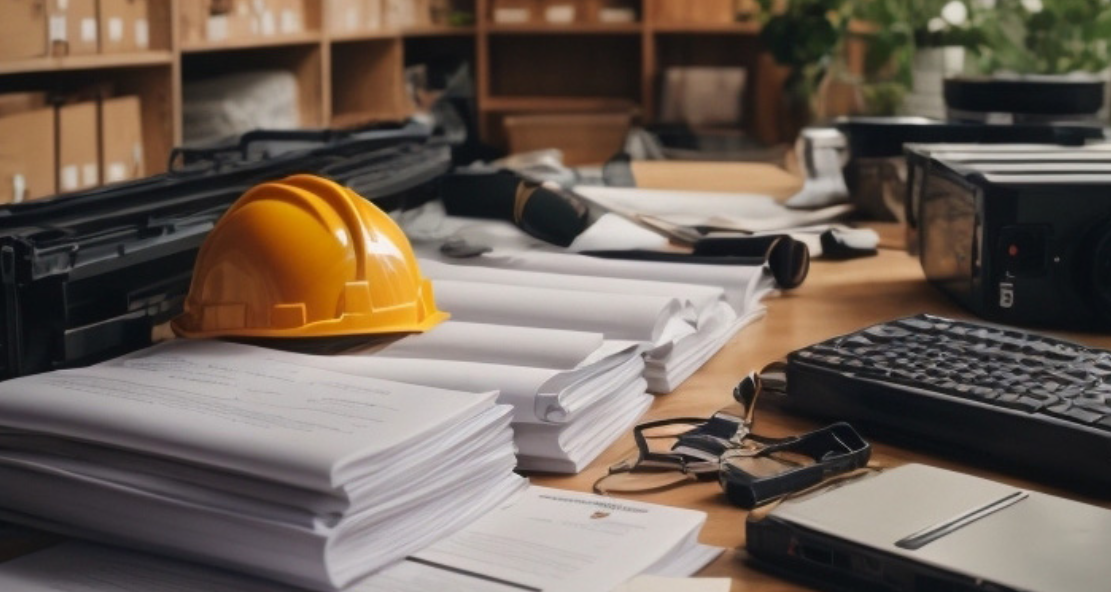Concrete Pump Maintenance: Crucial Tips
6 Lectura mínima
)
marzo 7, 2024
Concrete pumps are essential equipment in construction projects, facilitating the efficient transfer of liquid concrete to desired locations. Proper maintenance of these pumps is crucial for their optimal performance and longevity. Here are some tips to ensure the smooth operation and longevity of concrete pumps:
Introduction to Concrete Pumps
Concrete pumps are specialized machinery used to transport liquid concrete from one place to another. They come in various sizes and configurations, including truck-mounted, trailer-mounted, and stationary pumps. These pumps play a vital role in construction projects by delivering concrete to high-rise buildings, remote locations, and areas with limited accessibility.
Importance of Maintaining Concrete Pumps
:format(webp))
Maintaining concrete pumps is essential to ensure their reliability, safety, and efficiency. Regular maintenance helps prevent costly breakdowns, extends the lifespan of the equipment, and maintains optimal performance during operation.
Regular Inspection and Maintenance
Checking Hydraulic System
The hydraulic system is a critical component of concrete pumps responsible for powering the pumping mechanism. Regularly inspect hydraulic hoses, fittings, and seals for any signs of wear or damage. Ensure proper hydraulic fluid levels and replace filters as recommended by the manufacturer.
Inspecting Pump Components
Inspect all pump components, including the hopper, boom, and pipeline, for cracks, leaks, or corrosion. Replace worn-out parts and tighten loose connections to prevent hydraulic fluid or concrete leakage.
Lubrication of Moving Parts
Proper lubrication of moving parts, such as bearings, pistons, and cylinders, is essential to reduce friction and wear. Use the recommended lubricants and follow the manufacturer's guidelines for lubrication intervals.
Cleaning and Washing Procedures
Cleaning After Each Use
After each use, thoroughly clean the pump's hopper, pipeline, and boom to remove any residual concrete or debris. Use water or a cleaning solution to flush out the system and prevent buildup, which can cause blockages and damage.
Regular Washing to Prevent Buildup
In addition to post-operation cleaning, regularly wash the exterior of the pump to remove dirt, mud, and other contaminants. Pay special attention to areas prone to buildup, such as the hopper and discharge chute.
Storage and Protection Measures
Proper Storage Conditions
When not in use, store the concrete pump in a dry, sheltered location away from direct sunlight and extreme temperatures. Protect the pump from rain, snow, and other environmental elements that can cause corrosion and damage.
Covering and Sheltering from Elements
Cover the pump with a tarp or protective cover to shield it from dust, debris, and moisture. Consider using a dedicated storage shed or garage to provide additional protection against the elements.
Handling Wear and Tear
Addressing Common Issues
Monitor the pump for signs of wear and tear, such as hydraulic leaks, abnormal noises, or decreased performance. Promptly address any issues to prevent further damage and ensure safe operation.
Repairing and Replacing Parts
When necessary, repair or replace worn-out or damaged parts to maintain the pump's functionality. Work with qualified technicians and use genuine replacement parts to ensure compatibility and reliability.
Importance of Training and Education
Operator Training
Provide comprehensive training to operators on the proper use and maintenance of concrete pumps. Emphasize safe operating procedures, preventive maintenance tasks, and troubleshooting techniques to minimize risks and maximize efficiency.
Maintenance Staff Training
Equip maintenance staff with the necessary knowledge and skills to perform routine inspections, lubrication, and repairs. Invest in training programs and certification courses to ensure competence and proficiency in maintenance tasks.
Utilizing Manufacturer Guidelines
Following Manufacturer Recommendations
Follow the manufacturer's recommendations and guidelines for operating and maintaining the concrete pump. Refer to the equipment manuals, service bulletins, and technical documentation for specific instructions and procedures.
Reference to Manuals and Documentation
Keep all manuals, schematics, and documentation related to the concrete pump readily accessible for reference. Consult these resources for troubleshooting, parts identification, and maintenance procedures as needed.
Implementing Safety Protocols
Protective Gear
Ensure operators and maintenance personnel wear appropriate protective gear, including gloves, goggles, and safety helmets, when working with concrete pumps. Minimize exposure to hazardous materials and mitigate the risk of accidents or injuries.
Safety Checks Before Operation
Before each operation, perform thorough safety checks on the concrete pump to verify its readiness and integrity. Inspect all safety devices, emergency stops, and control systems to ensure proper functioning and compliance with regulations.
Extending Lifespan with Proper Care
Proper maintenance and care significantly extend the lifespan of concrete pumps, reducing the need for frequent repairs and replacements. Invest time and resources in preventive maintenance to maximize the return on investment and minimize downtime.
Environmental Considerations
Waste Management
Implement proper waste management practices to dispose of concrete residues, cleaning solutions, and maintenance materials responsibly. Avoid contaminating soil, water sources, or the surrounding environment with hazardous substances.
Eco-Friendly Practices
Explore eco-friendly alternatives and practices to minimize the environmental impact of concrete pump operations. Consider using biodegradable cleaning agents, recycling concrete waste, or investing in energy-efficient equipment.
Cost-Effective Maintenance Strategies
Preventive Maintenance vs. Reactive Maintenance
Differentiate between preventive maintenance, which involves proactive inspections and upkeep, and reactive maintenance, which addresses issues after they occur. Prioritize preventive maintenance to identify and resolve potential problems before they escalate into costly repairs.
Budgeting for Repairs and Replacements
Allocate sufficient budget for maintenance, repairs, and parts replacements to ensure the continued reliability and performance of the concrete pump. Plan for periodic inspections, scheduled maintenance intervals, and unforeseen contingencies to avoid budgetary constraints.
Benefits of Regular Maintenance
Regular maintenance offers numerous benefits for concrete pump owners and operators, including:
Increased Efficiency: Properly maintained pumps operate more efficiently, delivering concrete faster and with greater precision.
Reduced Downtime: Preventive maintenance minimizes unplanned downtime due to breakdowns or malfunctions, optimizing productivity and project timelines.
Long-Term Cost Savings: Investing in maintenance upfront saves money in the long run by avoiding expensive repairs, replacements, and operational disruptions.
Conclusion
Maintaining concrete pumps is essential for their reliable performance, safety, and longevity. By implementing regular inspection, cleaning, and maintenance procedures, operators can maximize the efficiency and lifespan of their equipment while minimizing downtime and repair costs.
FAQs
How often should concrete pumps be inspected and maintained?
Concrete pumps should be inspected and maintained according to the manufacturer's recommendations, typically at regular intervals or after a certain number of operating hours.
What are some common signs of wear and tear in concrete pumps?
Common signs of wear and tear include hydraulic leaks, abnormal noises during operation, decreased performance, and visible damage to pump components.
Are there any specific safety precautions to follow when operating concrete pumps?
Operators should wear appropriate protective gear, perform pre-operation safety checks, and adhere to recommended operating procedures to ensure safe operation of concrete pumps.
How can I extend the lifespan of my concrete pump?
Regular maintenance, proper storage, operator training, and adherence to manufacturer guidelines are key factors in extending the lifespan of concrete pumps.
What are the environmental considerations associated with concrete pump maintenance?
Proper waste management, use of eco-friendly practices, and compliance with environmental regulations are important considerations when maintaining concrete pumps.

Javier Bocanegra is Boom & Bucket's Technical Resolutions Lead, drawing on 10+ years in automotive and heavy equipment to diagnose issues, resolve complex post-sale cases, and keep machines - and customers - running smoothly. A certified heavy-equipment specialist, he's known for meticulous inspections and hands-on expertise across mechanical, electrical, and hydraulic systems. Based in Sacramento, Javier partners closely with buyers, vendors, and our field teams to deliver reliable outcomes and uphold our standards for safety and trust.


